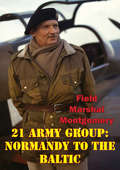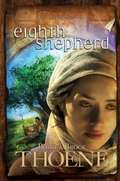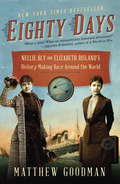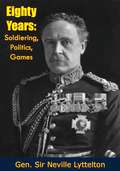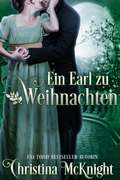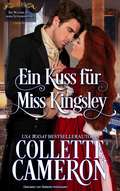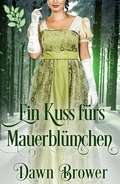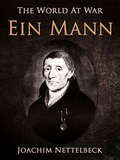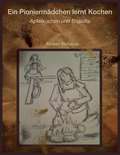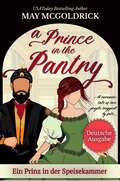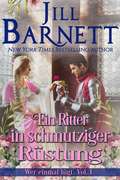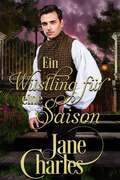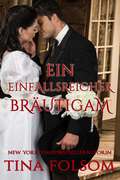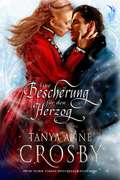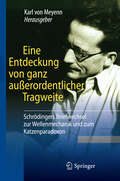- Table View
- List View
Eighth Army: El Alamein To The River Sangro [Illustrated Edition] (Memoirs Of Field Marshal Montgomery #2)
by Field Marshal Viscount Bernard Law Montgomery of Alamein KG GCB DSO PC[Illustrated with 16 highly detailed maps of the actions]Field Marshal Montgomery commanded the Eighth Army from 13th August 1942 until the 31st December 1943, and the 21st Army Group from 1st January 1944 until the German surrender on the 5th May, 1945. Whilst in command of the British Army of the Rhine, in occupation of Germany, shortly after the end of the Second World War Montgomery set out to record the exploits and victories of the troops under his command.Both this volume and its companion volume, Normandy to the Rhine, are superb examples of military history as presented by one of the greatest generals to command victorious armies in the field. The texts are taken from his personal war diaries and are distinguished by his incisive style. The whole strategy and course of these two campaigns are presented to the reader with great clarity and accuracy.El Alamein to the River Sangro is as he himself writes '... an authoritative account of the activities of the Eighth Army in the days of its greatest, successes'. El Alamein was the turning point in the war: from that momentous battle the tide against Germany turned. During the time the Eighth Army was commanded by Monty it lost not a single action, and when Monty was transferred to Europe in December 1943, Winston Churchill wrote to him: 'The immortal march of the Eighth Army from the gates of Cairo along the African shore, through Sicily, has now carried its ever victorious soldiers far into Italy towards the gates of Rome. The scene changes and vastly expands. A great task accomplished gives place to a greater, in which the same unfailing spirit will win for all true men a full and glorious reward.'
Eighth Shepherd (A. D. Chronicles #8)
by Bodie Thoene Brock ThoeneAfter Yeshua of Nazareth has raised his friend Elazar from the dead, news of Yeshua travels fast and the Sanhedrin begin their plot to kill him. Despite the danger, Yeshua and his followers begin the journey to Jerusalem for Passover. Meanwhile, Zachai the tax collector (Zacchaeus), the most hated man in Judea, longs to be a part of the Jewish society that he has been cut off from due to his profession. He falls into despair, believing God cant hear him and that he will always be alone. Simona, a leper who was healed by Yeshua but remains cut off from society to live in the sycamore grove, shows compassion to Zachai and tells him of Yeshua. Zachai begins his quest to find Yeshua in hopes that this man can heal his heart, just as he healed Simonas leprosy.
Eighty Days: Nellie Bly and Elizabeth Bisland's History-making Race Around the World
by Matthew GoodmanOn November 14, 1889, Nellie Bly, the crusading young female reporter for Joseph Pulitzer's World newspaper, left New York City by steamship on a quest to break the record for the fastest trip around the world. Also departing from New York that day--and heading in the opposite direction by train--was a young journalist from The Cosmopolitan magazine, Elizabeth Bisland. Each woman was determined to outdo Jules Verne's fictional hero Phileas Fogg and circle the globe in less than eighty days. The dramatic race that ensued would span twenty-eight thousand miles, captivate the nation, and change both competitors' lives forever. The two women were a study in contrasts. Nellie Bly was a scrappy, hard-driving, ambitious reporter from Pennsylvania coal country who sought out the most sensational news stories, often going undercover to expose social injustice. Genteel and elegant, Elizabeth Bisland had been born into an aristocratic Southern family, preferred novels and poetry to newspapers, and was widely referred to as the most beautiful woman in metropolitan journalism. Both women, though, were talented writers who had carved out successful careers in the hypercompetitive, male-dominated world of big-city newspapers. Eighty Days brings these trailblazing women to life as they race against time and each other, unaided and alone, ever aware that the slightest delay could mean the difference between victory and defeat. A vivid real-life re-creation of the race and its aftermath, from its frenzied start to the nail-biting dash at its finish, Eighty Days is history with the heart of a great adventure novel. Here's the journey that takes us behind the walls of Jules Verne's Amiens estate, into the back alleys of Hong Kong, onto the grounds of a Ceylon tea plantation, through storm-tossed ocean crossings and mountains blocked by snowdrifts twenty feet deep, and to many more unexpected and exotic locales from London to Yokohama. Along the way, we are treated to fascinating glimpses of everyday life in the late nineteenth century--an era of unprecedented technological advances, newly remade in the image of the steamship, the railroad, and the telegraph. For Nellie Bly and Elizabeth Bisland--two women ahead of their time in every sense of the word--were not only racing around the world. They were also racing through the very heart of the Victorian age.Advance praise for Eighty Days "What a story! What an extraordinary historical adventure!"--Amanda Foreman, author of A World on Fire "Vividly imagined and gorgeously detailed, Eighty Days recounts the exhilarating journey of two pioneering women, Nellie Bly and Elizabeth Bisland, as they race around the globe. Matthew Goodman has crafted a fun, fast, page-turning action-adventure that will make you wish you could carry their bags."--Karen Abbott, author of American Rose "What a delight to circumnavigate the globe with pioneering journalists Nellie Bly and Elizabeth Bisland. The two women carve out an adventurous path in a constrained Victorian world that cares as much about their marriage prospects and the number of trunks they pack as about their trailblazing career aspirations. Matthew Goodman's lively writing and detailed research bring the story of these two remarkable women to life as they race around the world, full steam ahead, giving us an intimate look at a late-nineteenth-century world that is suddenly shrinking in the face of rapid technological change. Only one of these two remarkable women can win the race around the world, but the reader of this fascinating tale will be certain of a reward."--Elizabeth Letts, author of The Eighty-Dollar Champion
Eighty Years of Archaeology at Liangzhu (Liangzhu Civilization)
by Yefei ZhuThis book summary introduces the key research findings, exploration and excavation works carried out during the 80 years of archaeological endeavours entirely devoted to Liangzhu historical sites. Xingeng SHI first discovered of neolithic remains in 1936, followed along with designation of official name which was given by Nai XIA in 1959. Another perspective also indicates finding of several pieces of black pottery at the Qipanfen historical site in the year 1936 till the latest over 1200 pieces of jades unearthed in Fanshan cemetery in the year 1986. A brief timeline history as listed above has been demonstrated that the great efforts and sacrifices had made by earlier generations of archaeologist in Liangzhu as witness to explore the origin of the 5000 years of Chinese civilization. The public is more familiar with Fanshan cemetery and Liangzhu ancient city as well as precious cultural relics such as jade Cong and jade Yue. Through the 80 years of archaeological ruins of Liangzhu field works that performed, in fact, there are existing historical monuments for example as places of Zhucundou and Wujiabu and ordinary objects include pottery and stoneware, they remain unknown to the general public. This book offers the readers a unique perspective, is the first research to focus on the Liangzhu Archaeological Team members’ viewpoint of exploring the perceived value of an extraordinary experience and compare it with an ordinary experience behind the 80 years of archaeology of the Liangzhu site.
Eighty Years: Soldiering, Politics, Games
by Gen. Sir Neville LytteltonBegun in 1914 and first published in 1927, these are the memoirs of General Sir Neville Gerald Lyttelton, a British Army officer who served, in the Sudan, Ireland and most notably the Second Boer War. He draws upon his reminiscences with the aid of correspondence with various members of his family and from his diary entries dating back as far as 1873.A fascinating military history read!
Ein Earl zu Weihnachten
by Christina McKnightEIN MANN AUF DER FLUCHT VOR DER VERGANGENHEIT ... Als Silas Anson von seinem Vater, an den er sich nicht erinnern kann, die Grafschaft Lichfield erbt, hat er nur ein Ziel: für seine Geschwister zu sorgen. Um das zu erreichen, muss er zwei Dinge tun: einen Weg finden, um das Anwesen aus der Armut herauszuholen, und sich der Unterstützung seiner mächtigen Familie versichern - eine Familie, die seine Mutter vor vielen Jahren im Stich ließ. Eine arrangierte Ehe mit der Tochter des Marquess of Blandford scheint der perfekte Weg, beides zu erreichen und ihm ein normales, glückliches Leben zu ermöglichen. ... BRAUCHT EINE FRAU, DIE IN DIE ZUKUNFT SEHEN KANN. Nur ist Lady Mallory Hughes kaum die gewöhnliche Debütantin, mit der er rechnet. Zusammen mit einer ordentlichen Mitgift hat sie auch eine Gabe geerbt, die in ihrer Familie immer wieder auftaucht: sie kann in die Zukunft sehen. Jahrelang hat ihre Familie sie vor der Gesellschaft verborgen gehalten, aus Furcht, dass sie Schande über die Blandfords bringen könnte. Wenn sie sich die Chance auf ein unabhängiges Leben - und auf Liebe - erhalten will, muss sie diese Woche überstehen, ohne sich und ihre Visionen bei Silas zu verraten. Doch als Mallory Silas versehentlich berührt, sieht sie seinen Tod. Mit Silas' Leben in Gefahr, wie kann Mallory ihn retten, ohne über ihre Gabe zu reden und dadurch ihre Chancen auf eine gemeinsame Zukunft zu zerstören?
Ein Jahrhundert Grundschule: Zur Geschichte der Basisinstitution des deutschen Bildungssystems
by Susanne Miller Margarete Götz Michaela VogtIn dem Buch wird in thematisch differenzierter Weise die 100-jährige Geschichte der Grundschule als Basisinstitution des deutschen Schulsystems rekonstruiert. Analysiert werden im diachronen Verlauf die bildungstheoretische Fundierung der Grundschularbeit, ihr pädagogisch-didaktisches wie ihr institutionelles Profil, weiterhin die Ausbildungs- und Berufsspezifika der Grundschullehrkräfte sowie am Beispiel des Sachunterrichts eine curriculare Besonderheit des Grundschulunterrichts. Die jeweiligen Analysebefunde werden in ihrer Bedeutung für die gegenwärtige Arbeit und die zukünftige Entwicklung der Grundschule reflektiert.
Ein Klagelied für Melusine: Ein mittelalterliches Märchen
by Claire DelacroixMelusine ist dazu verflucht, jede Woche einen Tag lang die Gestalt zu wechseln und sie weiß, dass nur die Liebe sie befreien kann. Als sie Raymond begegnet, einem gut aussehenden Ritter, der dringend Hilfe braucht, die nur sie ihm geben kann, glaubt sie, dass ihre Chance gekommen ist. Sie schwört ihm eine treue Ehefrau zu sein und seine Liebe zu verdienen, auch wenn sie ihren Fluch geheim halten will. Als ihre glückliche Verbindung durch ein Unglück auf die Probe gestellt wird, schwört Raymond, dem eifersüchtigen Geflüster der Anderen das Gegenteil zu beweisen. Wird er in Versuchung geraten, sein Versprechen gegenüber Melusine zu brechen, um die Wahrheit herauszufinden? Und wird seine Liebe zu seiner Braut überleben, wenn ihr Geheimnis gelüftet wird?
Ein Kuss für Miss Kingsley: Ein liebreizender bis pikanter, zeitloser Liebesroman (Ein Walzer mit einem Schwerenöter #1)
by Collette CameronKann ein wunderschönes Fräulein der Liebe wieder vertrauen? Besonders bei dem Schurken, der ihr das erste Mal das Herz gebrochen hatte? Olivia Kingsley hatte nicht damit gerechnet, dass ihr Herz im Sturm erobert werden würde und sie einen Heiratsantrag nur zwei Wochen nach Beginn ihrer ersten Saison zu erhält. Jedoch, ein herrlicher Tanz mit Allen Wimpleton, Erbe eines Viscountstitels, und ihre Zukunft ist besiegelt. So denkt sie jedenfalls, bis ihr exzentrischer Vater plötzlich ankündigt, dass er mit der gesamten Familie für ein Jahr in die Karibik geht. Mit dem Wissen, dass ihr Vater wahrscheinlich seine Bitte um Olivias Hand ausschlagen wird, bittet Allen sie, mit ihm durchzubrennen. Sie weigert sich, da sie erst kürzlich ihre Mutter verloren hat und sich Sorgen darüber macht, dass ihr Vater ebenfalls erkrankt ist – wobei er darauf besteht, dass dies ein Geheimnis bleiben muss. Verzweifelt über ihren Weggang und nichts ahnend vom schlechten Gesundheitszustand ihres Vaters, zweifelt Allen an ihrer Liebe für ihn und besteht törichterweise darauf, dass sie sich entscheiden muss – zwischen ihm oder ihrem Vater. Todunglücklich über Allens Herzlosigkeit, aber dankbar dafür, dass er seine wahre Natur vor ihrer Hochzeit offenbart hat, kehrt Olivia ihrer Liebe den Rücken zu. Aus dem einen Jahr werden drei, genügend Zeit für ein gebrochenes Herz, um zu heilen, und nachdem ihr Vater gestorben ist, kehrt Olivia nach England zurück. Auf einem Ball Allen gegenüberstehend, erkennt sie, dass sie ihn nie aus ihrem Herzen gelöscht hat. Aber können sie ihre Vergangenheit und alte Wunden hinter sich lassen, um die Liebe wieder zu finden? Oder hat Allen bereits eine andere gefunden?
Ein Kuss fürs Mauerblümchen
by Dawn Brower Kim HenryHast du je von einer Hochzeit zum Weihnachtsfest geträumt? Ein Mauerblümchen zu sein, hat nie besser ausgesehen, aber auch das wird Lady Juliette Brooks nicht retten. Ihr Vater hat eine Ehe mit einem gewalttätigen Mann für sie arrangiert. Ihr bleibt nur eine einzige Wahl – den Herzog von Kissinger zu zwingen, ein Versprechen zu ehren, das er ihr vor langer Zeit gegeben hat. Grayson Abbot, der Herzog von Kissinger, hat nicht vor, Lady Juliette zu ehelichen. Genaugenommen gibt es keine einzige Lady in der Gesellschaft, die er zu heiraten wünscht. Doch die Tatsache, dass er Juliette einst ein Versprechen gab, lässt sich nicht verleugnen, und er ist kein Mann, der Schwüre bricht. Widerstrebend willigt er ein, mit ihr zusammen durchzubrennen. Mitten in der Weihnachtszeit brechen sie zu ihrem Abenteuer auf. Auf der Reise nach Schottland kommt es zu Verzögerungen, es ist eisig kalt, und sie entdecken eine Freundschaft wieder, die sie fast vergessen hatten. Wird Juliette endlich herausfinden, wie ein Kuss sich anfühlt, und wird sie das Herz des Herzogs gewinnen
Ein Kuss zur Weihnachtszeit
by Christina Mcknight Kim HenryLady Pippa Godfrey musste mitansehen, wie ihr Debüt in der Londoner Gesellschaft vollständig danebenging. Um den Schmähreden zu entgehen, flieht sie nach Somerset auf den Familienstammsitz für ein ruhiges Weihnachtsfest. Doch ehe ihre Eltern dort ankommen, geht ein nie gekanntes Unwetter auf Somerset nieder und zerstört jede Hoffnung auf eine weiße Weihnacht. Die Straßen sind überflutet und Reisende werden überall aufgehalten, und Pippa steht ein einsames Fest bevor. Doch dann taucht ein verdreckter, wütender und verteufelt gutaussehender Lord an ihrer Tür auf und verlangt nach einer Unterkunft. Lucas Hartfeld, der Earl of Maddox, wurde von seinen Eltern dazu verpflichtet, eine Weihnachtsfeier zu besuchen, weit weg von seinem Stadthaus in London. Er vermutet, dass sie weit weniger ehrbare Motive für dieses Wiedersehen haben als eine einfache Feier auf dem Land. Als seine Kutsche in einem Unwetter liegenbleibt, ist er gezwungen, bei dem einzigen Haus weit und breit um Obdach zu bitten. Doch Lady Pippa zögert, ihn einzulassen, und er tut, was er immer getan hat - sich Einlass verschaffen, bis das Unwetter weitergezogen ist. Doch die wunderschöne Dame erregt weit mehr Interesse in ihm, als er zuzugeben bereit ist. Kann Lucas einen Weg finden, dem Schicksal zu entgehen, das seine Eltern für ihn bereithalten? Während Lady Pippa bemüht ist, dem fordernden, eingebildeten Lord den Aufenthalt so unangenehm wie möglich zu machen, suchen Erinnerungen an ihre Vergangenheit sie heim. Kann sie die Schwierigkeiten, mit denen das Leben sie bedacht hat, lange genug vergessen, um von dem perfekten Fremden einen Weihnachtskuss zu erhaschen?
Ein Mann: Des Seefahrers Und Aufrechten Bürgers Joachim Nettelbeck Wundersame Lebensgeschichte (The World At War)
by Joachim NettelbeckJoachim Christian Nettelbeck (* 20. September 1738 in Kolberg; 29. Januar 1824 ebenda) war ein durch seine Rolle bei der Verteidigung Kolbergs im Jahre 1807 und seine Autobiographie bekannter deutscher Volksheld. Als Elfjähriger durfte Nettelbeck auf dem Schiff seines Onkels ausnahmsweise nach Amsterdam mitreisen. Dort schlich er sich im Hafen an Bord eines holländischen Ozeanseglers und kam erst auf offener See wieder zum Vorschein. Das Schiff war ein Sklavenhändler und befuhr das Dreieck Westeuropa - Westafrika - Westindien - Westeuropa. Nach neunmonatiger Reise besuchte Nettelbeck bis zur Konfirmation wieder die Schule in Kolberg. Danach begann er eine Seemannsausbildung, zunächst als Schiffsjunge auf Ost- und Nordseefahrern. (Auszug aus Wikipedia)
Ein Pioniermädchen lernt Kochen: Apfelkuchen und Biskuits
by Amber RichardsIn diesem pädagogischen Buch wird das Leben der Mädchen in der Pionierzeit beschrieben, wie sie das Kochen erlernten und andere Bereiche des Pionierlebens. Es wurde hauptsächlich für Mädchen im Alter von 8 bis 13 Jahren geschrieben, abhängig von individuellem Lesegrad und Interessen des Kindes. In diesem kurzen, in Kapitel unterteilten Buch über das Pionierleben sind Bilder enthalten, die den Kindern helfen, sich die damalige Zeit vorzustellen. Es ist die realistische Betrachtung des Lebensalltags, der Werkzeuge und Ausrüstungsgegenstände, wie sie in Pioniertagen verwendet wurden. Wie man Nahrung bereitstellen oder wie man Lebensmittel ohne Kühlung frisch halten konnte. Meine Hoffnung als Autorin war, den Mädchen auf inspirierende Weise ein Gefühl für das Leben in den frühen Jahren der amerikanischen Geschichte zu vermitteln. Es werden besonders die Unterschiede zwischen der Lebensweise damals und in heutiger Zeit beleuchtet. Das Buch schließt mit einem Projekt für Mädchen, in welchem sie, mit Beisein eines Erwachsenen, ausprobieren können, Apfelkuchen und Biskuits zu backen, fast so, wie es damals ein Pioniermädchen tat. Beide Rezepte hierfür sind im Buch enthalten. Dieses Projekt eignet sich auch hervorragend für einen Experimentiertag zuhause. HIER können Sie Ihre Ausgabe herunterladen
Ein Prinz in der Speisekammer: SERIE DER FAMILIE PENNINGTON (SERIE DER FAMILIE PENNINGTON)
by Jan Coffey May McGoldrickEINE NOVELLE FAMILIE PENNINGTON Lady Taylor Fleming ist eine Erbin, der ein Verehrer auf den Fersen ist. Ihr Schritt-für-Schritt-Plan, ihn loszuwerden, ist einfach. Doch der Herzog von Bamberg ist alles andere als einfach. Taylor versucht, sich in die Highlands zu flüchten, aber ihre Pläne werden kompliziert, als der Herzog vor ihrer Tür steht und ihre treuen Verbündeten sie im Stich lassen. Und selbst bei den besten Plänen können die Dinge schief gehen...
Ein Ritter in schmutziger Rüstung (Fool Me Once - Wer einmal lügt #1)
by Jill BarnettVon Jill Barnett, der Bestseller-Autorin der New York Times, kommt hier eine charmante Geschichte einer englischen Jungfer und einem tapferen Ritter, der sich in sie verliebt. Lady Linnet von Ardenwood ist verzweifelt. Um vor der Zwangsheirat mit Englands furchterregendstem Ritter zu fliehen, heuert sie den gefährlichen Söldner William de Ros an, um ihr bei der Flucht in ein Kloster zu helfen. Was sie nicht weiß, ist dass de Ros in Wahrheit der neue Baron Warbrooke ist, der im Einvernehmen mit Linnets besorgtem Großvater nur eine einzige Woche Zeit hat, um um sie zu werben und ihre Zuneigung zu gewinnen. Für Fans von Julie Garwood und Jude Deveraux.
Ein Schurke zum Greifen nahe (Schicksalhafte Schurken #6)
by Amanda MarielEine Lady, die auf Verführung aus ist … Othelia Grantham heiratete den Earl of Brighton, einen um viele Jahre älteren Mann, um ihre Familie vor dem finanziellen Ruin zu bewahren. Der Graf war freundlich, aber zwischen ihnen funkte es nicht. Da Othelia nun Witwe ist, schwört sie, ein Leben nach ihren Vorstellungen zu führen. Priorität Nummer eins: Nie wieder heiraten. Priorität Nummer zwei: Leidenschaft erleben. Sie nimmt sich den 9. Duke of Ashbrook als Ziel. Er ist der perfekte Halunke, um ihrem Verlangen zu frönen, und er birgt kein Risiko einer Heirat. Ein Schurke, der auf eine Läuterung aus ist … Alister Brinsley-Radclyffe, Duke of Ashbrook, braucht eine Herzogin. Eine Tat, die einem Herzog leicht gelingen sollte, aber selbst sein Titel reicht nicht aus, um ihn von dem Ruf reinzuwaschen, den er sich aufgebaut hat, indem er der Sünde frönte. Als eine achtbare junge Witwe mit einer skandalösen Bitte an ihn herantritt, kann er diese nicht ablehnen. Sie könnte seine letzte Chance sein, seine Ländereien zu retten. Er wird Lady Brighton etwas über Leidenschaft beibringen und dabei ihr Herz und ihr Vermögen erobern. Nur einer kann gewinnen … Wenn sich Othelia in den Herzog verliebt, verliert sie die Kontrolle über ihr Vermögen und ihre Freiheit. Wenn Alister ihre Hand nicht gewinnen kann, wird sein Vermächtnis in Trümmern liegen. Als wahre Liebe aufblüht, finden sie sich am Rande der Pflicht und des Verlangens wieder. Bleibt nur noch eine Frage: Wer wird als Sieger hervorgehen?
Ein Wüstling für eine Saison: Bund der Sündhaften Witwen, Buch 15
by Jane CharlesAngelo Evans, der Earl of Bolton, hat seiner Mutter ein Versprechen geleistet: Er wird noch vor Weihnachten heiraten. Da die kommende Saison die letzte sein wird, die er jemals genießt, ist Angelo entschlossen, sich allen Freuden des Lebens hinzugeben: Brandy, Frauen und dem Glücksspiel. Im Herbst wird er eine junge Dame finden, sie heiraten, alte Laster ablegen und sich den langweiligen Fesseln des Ehelebens beugen. Lady Octavia Kepple ist endlich frei. Nun, da ihre Trauerzeit vorüber ist, will sie die Saison so genießen, wie es nur eine ehrbare Witwe kann: indem sie sich einen Liebhaber nimmt. Doch sie will nicht irgendeinen Mann, sondern den Gentleman, von dem es heißt, er sei der beste Liebhaber Englands – den Earl of Bolton. Jetzt muss sie ihn nur noch davon überzeugen, ihr Wüstling für eine Saison zu sein. Obwohl er von Lady Kepples Vorschlag fasziniert ist und sein Verlangen nach ihr nicht leugnen kann, möchte Angelo in seiner letzten Saison der Freiheit nicht an eine Geliebte gebunden sein. Lady Kepple ist jedoch sehr hartnäckig und die schließlich erzielte Einigung könnte für beide mehr verheißen, als sie erwartet haben.
Ein einfallsreicher Bräutigam: Western-Kurzgeschichte
by Tina FolsomAls Rancher Irving versucht, einen geeigneten Ehemann für seine widerwillige Tochter Ellen zu finden, indem er eine Menge Geld bietet, nimmt sie die Sache selbst in die Hand und plant zu fliehen. Doch ein vermeintlicher Cowboy vereitelt ihren Plan und entführt sie stattdessen. James ist jedoch kein Cowboy, sondern ein Rancher auf der Suche nach einer Frau. Und als er Ellen erwischt, nimmt er sie mit auf eine leidenschaftliche und erotische Reise, während der er versucht, ihr beizubringen, dass ein Ehemann doch einen Zweck erfüllen kann. Als Rancher Irving versucht, einen geeigneten Ehemann für seine widerwillige Tochter Ellen zu finden, indem er eine Menge Geld bietet, nimmt sie die Sache selbst in die Hand und plant zu fliehen. Doch ein vermeintlicher Cowboy vereitelt ihren Plan und entführt sie stattdessen. James ist jedoch kein Cowboy, sondern ein Rancher auf der Suche nach einer Frau. Und als er Ellen erwischt, nimmt er sie mit auf eine leidenschaftliche und erotische Reise, während der er versucht, ihr beizubringen, dass ein Ehemann doch einen Zweck erfüllen kann. Jenseits des Olymps: Buch 1 - Ein Grieche für alle Fälle Buch 2 - Ein Grieche zum Heiraten Buch 3 - Ein Grieche im 7. Himmel Buch 4 - Ein Grieche für Immer Der Club der ewigen Junggesellen Buch 1: Begleiterin für eine Nacht Buch 2: Begleiterin für tausend Nächte Buch 3: Begleiterin für alle Zeit Buch 4: Eine unvergessliche Nacht Buch 5: Eine langsame Verführung Buch 6: Eine hemmungslose Berührung Codename Stargate Band 1 - Ace – Auf der Flucht Band 2 - Fox – Unter Feinden Band 3 - Yankee – Untergetaucht (kommt im Frühjahr 2022) Time Quest Band 1 - Umkehr des Schicksals Hüter der Nacht: Buch 1 – Geliebter Unsichtbarer Buch 2 – Entfesselter Bodyguard Buch 3 – Vertrauter Hexer Buch 4 – Verbotener Beschützer Buch 5 – Verlockender Unsterblicher Buch 6 – Übersinnlicher Retter Buch 7 – Unwiderstehlicher Dämon Scanguards Vampire: Buch 1 - Samsons Sterbliche Geliebte Buch 2 - Amaurys Hitzköpfige Rebellin Buch 3 - Gabriels Gefährtin Buch 4 - Yvettes Verzauberung Buch 5 - Zanes Erlösung Buch 6 - Quinns Unendliche Liebe Buch 7 - Olivers Versuchung Buch 8 - Thomas' Entscheidung Buch 8 1/2 - Ewiger Biss (Eine Scanguards Hochzeits) (Auch als zweisprachiges Taschenbuch erhältlich) Buch 9: Cains Geheimnis Buch 10: Luthers Rückkehr Novelle: Brennender Wunsch Buch 11 – Blakes Versprechen Buch 11 1/2 – Schicksalhafter Bund (Novelle) Buch 12 – Johns Sehnsucht Der Clan der Vampire (Venedig 1 & 2) Der Clan der Vampire (Venedig 3 & 4) Der Clan der Vampire (Venedig 5)
Ein neues China-Bild: Wie zeitgenössische chinesische Literatur die Diskussion um China bereichern kann
by Gengsong GaoDieses Buch untersucht die besonderen Beiträge chinesischer Romanautoren zur China-Debatte im Hinblick auf die Schlüsselthemen chinesische Sprache, Machtdynamik und konfuzianische Tradition. Während China auf dem Vormarsch ist, debattieren chinesische Wissenschaftler und politische Entscheidungsträger heftig über Chinas Vergangenheit, Gegenwart und Zukunft. Wer sind die Hauptdiskutanten? Wie analysieren sie die Probleme Chinas und wie finden sie Lösungen? Was sind die wichtigsten Errungenschaften und Schwächen der intellektuellen Debatte und des Diskurses in China? Auch chinesische Romanautoren beteiligen sich an der China-Debatte. Ihre Stimmen sind jedoch selten zu hören. In diesem Buch wird die These vertreten, dass chinesische Romanciers durch die Dramatisierung der Vielfalt der Alltagssprachen, der aktiven diskursiven Praktiken und der bezaubernden lokalen Traditionen nicht nur die vorherrschenden liberalen,neulinken und neokonfuzianischen Ideologien illustrieren, sondern die China-Debatte bereichern und einen "neuartigen" Ansatz für unser Verständnis des modernen China bieten.
Ein ungeschliffener Diamant
by Dawn BrowerPieretta geht an Bord eines Schiffes, nichtsahnend, dass Thor bereits auf sie wartet, um sie als Rache an ihrem Großvater zu entführen. Wird sich die Liebe einmischen und ihrer beider Schicksale auf einen neuen Kurs bringen? Pieretta Carlyle sieht sich mit dem Verlust ihres Vaters konfrontiert, der sie abgesehen von ihrem Großvater, dem Comte Renard Dubois, ohne Familie zurücklässt. Der Comte besteht darauf, dass sie nach Frankreich reist, um bei ihm zu leben. Aber Pieretta möchte Charleston nicht verlassen – das einzige Zuhause, das sie je kannte. Ihr Großvater ist jedoch ihr Vormund und so muss sie seinem Wunsch nachkommen... Thor hat noch eine Rechnung zu begleichen und Pieretta ist der Schlüssel zu seinem Racheplan. Unabsichtlich wurde er zum Piraten, nachdem sein Geschäftspartner versucht hatte, ihn zu ermorden. Er muss Pieretta unbedingt in seine Finger kriegen und lässt sich erst recht nicht von der Aussicht, ein Schiff zu kapern, davon abbringen. Als Pieretta und Thor aufeinandertreffen, fühlen sie sich wider besseres Wissen sofort zueinander hingezogen. Pieretta ist von den Schandtaten des Piraten abgestoßen. Thor weiß, was Pieretta von ihm hält, setzt seinen Plan aber dennoch in die Tat um. Sie ist lediglich ein Werkzeug für seine Rache. Was aus ihnen wird, hängt von Thors Rachebedürfnis und Pierettas Bereitschaft ab, ihm für seine niederträchtigen Taten zu verzeihen.
Ein verhängnisvoller Tag im Mai (Schicksalhafte Schurken #2)
by Amanda MarielLady Emma Finch wusste, dass es desaströse Ausmaße annehmen würde, als sie einwilligte, ihre Freundinnen zum Maifest ins Dorf zu begleiten. Doch sie konnte nicht wissen, dass gerade ein hinreißender Schurke und ein leidenschaftlicher Kuss ihr Untergang sein würden. Viscount Linley, Archer Wakefield, wohnte den Festlichkeiten mit der Absicht auf Spaß und Ausgelassenheit bei. Als sein Freund und er eine Wette abschließen, ist Linley sofort Feuer und Flamme. Was könnte schon passieren, wenn er eine Dorfpomeranze küsste? Weder Linley noch Emma hätten sich jemals träumen lassen, was nach diesem verhängnisvollen Maitag folgen sollte.
Eine Bescherung für den Herzog
by Tanya Anne Crosby Michaela Bittner und Christina LöwEs war in der Woche vor dem Weihnachtsfest, ... Lucien Morgan, der fünfte Herzog von Willyngham, ist sich sicher, dass er Emma Peters niemals das geben kann, was sie sich am sehnlichsten wünscht. Also entschließt er sich, ihre bestehende Verlobung zu lösen. Aber dann erkennt Lucien, dass die unschuldige Verlobte von damals zu einer leidenschaftlichen und unwiderstehlichen Frau herangewachsen ist. Als im ganzen Haus ... Während die Familie die Tage bis Weihnachten zählt, scheint allen klar zu werden, dass Lucien und Emma füreinander bestimmt sind - nur das Paar selbst will sich dem Schicksal nicht beugen. Mit der Hilfe einiger spitzbübischer Kinder erkennen Emma und Lucien nach und nach, dass die eine oder andere schöne Bescherung letzten Endes den Weg für die Liebe freimacht.
Eine Bestehende Marine: Österreich-Ungarische Kriegsschiffe Des Ersten Weltkrieges
by Russell Phillips Samantha TownshendAm Beginn des ersten Weltkrieges war die Kaiserliche und Königliche Kriegsmarine, die österreich-ungarische Marine, zu dem Krieg verpflichtet, als Erzherzog Franz Ferdinand und seine Frau Sophie an Bord des Flaggschiffs aufgebahrt wurden. Die Kriegsmarine nahm am Kriegsende teil, als sie zusammen mit ihrer angeordneten Monarchie aufgelöst wurde. Diese kleine aber mächtige "bestehende Marine" zwangen die Alliierten während des Krieges zur Erhaltung der Otranto-Sperre. Die osterreich-ungarischen und deutschen U-Booten randalierten im Mittelmeer, obwohl die Großkampfschiffe die Häfen nie verließen.Dieses mit dreißig Fotos und Bilder illustrierende Buch liefert eine umfassende detaillierte Liste der Schiffe der Kriegsmarine sowie ihre Operationen und die einzigartige Schwierigkeiten, die die Marine lösen musste. Diese Probleme erstrecken sich von bestrittenen kriegführenden Parlamenten bis durch landumschlossene Ungarn gebaute Schiffe.
Eine Entdeckung von ganz außerordentlicher Tragweite
by Karl Von MeyennMit der Bekanntgabe seiner Wellenmechanik Anfang des Jahres 1926 eröffnetet Erwin Schrödinger viele neue physikalische Perspektiven. Auch heute noch bildet die Schrödingergleichung die Grundlage der gesamten Mikrophysik und ihrer Anwendungen. Die Entstehungsgeschichte dieser Entdeckung beleuchtet der Band anhand von 300 Briefen, die Schrödinger mit Zeitgenossen, darunter Albert Einstein, ausgetauscht hat. Die Briefe hat der Herausgeber mit Anmerkungen und Kommentaren versehen und in ihren wissenschaftlichen und historischen Kontext gestellt.
Eine Governance-Theorie des Kleinstaats
by Sebastian WolfDieses Werk untersucht außergewöhnliche Regelungsmechanismen in Gesetzgebungsprozessen in Liechtenstein wie z. B. übergroße parlamentarische Mehrheiten, ein schwacher Koalition-Opposition-Dualismus und geringe Fraktionsgeschlossenheit. Zur Analyse wird ein theoretischer Rahmen aus Kleinstaatentheorie und Governancetheorie entwickelt und im Rahmen einer explorativen Fallstudie getestet. Das Buch trägt insbesondere zum besseren Verständnis des politischen Systems Liechtensteins und zur Weiterentwicklung der sozialwissenschaftlichen Kleinstaatentheorie bei.
